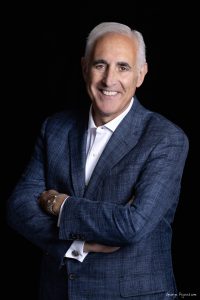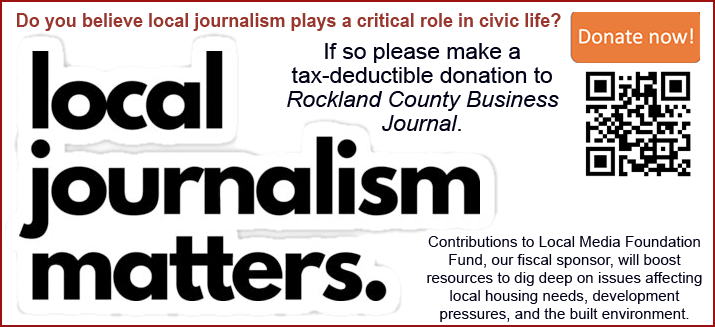|
RCBJ-Audible (Listen For Free)
|
A Strong Healthcare Ecosystem Is A Collective Investment In The Future And Sustainability Of Our Region
By Paul Adler, Esq.
 The health of a community is inseparable from the health of its economy. Across the Hudson Valley, hospitals, medical centers, and the many businesses that support them are not only essential to our physical well-being—they are foundational to our economic vitality. The healthcare industry is one of the largest employers in every county of our region. From major hospitals like Montefiore Nyack, Garnet Health, and Westchester Medical Center, to community clinics and home care agencies, healthcare drives billions in regional economic activity, creates good-paying jobs, and anchors our local tax base.
The health of a community is inseparable from the health of its economy. Across the Hudson Valley, hospitals, medical centers, and the many businesses that support them are not only essential to our physical well-being—they are foundational to our economic vitality. The healthcare industry is one of the largest employers in every county of our region. From major hospitals like Montefiore Nyack, Garnet Health, and Westchester Medical Center, to community clinics and home care agencies, healthcare drives billions in regional economic activity, creates good-paying jobs, and anchors our local tax base.
But this vital engine of growth and stability is under threat. Pending federal legislation—specifically H.R. 1—poses a serious danger to the financial sustainability of New York’s hospitals and healthcare providers. If enacted, H.R. 1 would drastically alter the funding landscape for Medicaid and Medicare, shifting billions of dollars in coverage costs from the federal government to the states. For New York, that means an estimated $3 billion in potential cuts.
The New York State Department of Health has warned that Hudson Valley hospitals alone could face $168 million in uncompensated care losses as a result of reductions in Medicaid and Essential Plan funding. Those are not abstract numbers. They translate directly into fewer nurses, longer wait times, deferred capital projects, and diminished access to care—especially for our most vulnerable neighbors.
Hospitals like Montefiore Nyack have already sounded the alarm. They understand that H.R. 1 doesn’t just threaten the health of individual New Yorkers—it threatens the economic health of entire communities. When hospitals are forced to absorb massive federal funding cuts, the ripple effects are immediate and far-reaching. Healthcare institutions are among the largest employers in the Hudson Valley. When their financial stability is undermined, so is the stability of the thousands of families who depend on them for their livelihoods.
That’s why it is critical for Congress to revisit H.R. 1 and for the federal government to honor the three-year transition period contemplated under the law for states like New York that use a similar reimbursement structure. The Centers for Medicare and Medicaid Services (CMS) must also support state-led solutions—like the Managed Care Organization (MCO) tax, which was approved by CMS in December 2024. This important measure allows New York to generate sustainable funding for its Medicaid program, easing the burden on hospitals while ensuring that care remains accessible for patients. Supporting the MCO tax is not only good fiscal policy—it’s sound economic development strategy.
Make no mistake: healthcare is economic development. Hospitals and healthcare networks form the backbone of a region’s workforce and talent ecosystem. They provide a sustainable pipeline of well-educated, locally trained professionals who can afford to live, work, and raise families here. They partner with our colleges and universities—like Dominican University, Rockland Community College, and others—to prepare students for meaningful careers in nursing, allied health, medical technology, and administration. These training links strengthen both our educational institutions and our regional labor market.
Investment in healthcare infrastructure also yields powerful economic returns. When hospitals modernize—adding single-patient rooms, upgrading technology, or hardening facilities to withstand future crises—they’re not just improving patient care. They’re creating construction jobs, spurring local spending, and positioning the Hudson Valley as a destination for world-class medical services in a community setting. Transformational projects like these multiply their economic impact many times over.
Quality healthcare also makes the Hudson Valley more attractive to families, employers, and investors. In an increasingly mobile world, people and businesses can choose where they want to locate. They are drawn to regions that offer excellent healthcare access and advanced specialty services. A strong, well-funded healthcare system becomes a competitive advantage—helping us attract new residents, retain our existing workforce, and encourage companies to invest locally.
Today’s patient base is also far more discerning and mobile than in years past. People expect high-quality, specialized care close to home. They no longer see healthcare as a local commodity, but as a key factor in their decision to live, work, and retire in a region. The Hudson Valley must meet that standard if it hopes to grow and prosper.
At its core, a strong healthcare ecosystem is a collective investment in the future and sustainability of our region. It ensures that our residents remain healthy and productive, that our workforce remains skilled and engaged, and that our economy remains resilient in the face of change.
Lasty, if we want the Hudson Valley to thrive, we must defend the financial integrity of our healthcare institutions. We must urge our federal leaders to reconsider the damaging provisions of H.R. 1, support the continued use of the MCO tax, and allow states the transition time they need to adjust. Our hospitals are not just places of healing—they are pillars of economic strength. Protecting them protects all of us.
Paul Adler is Chief Strategy Officer of Rand Commercial. paul.adler@randcommercial.com











